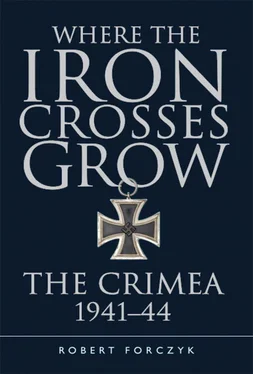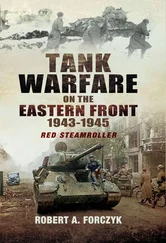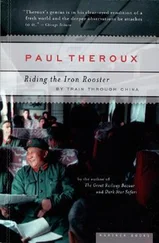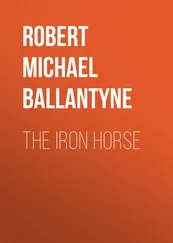Meanwhile, following victory in the battle of the Sea of Azov, Manstein had convinced the OKH that the 11. Armee could not accomplish two divergent operational objectives, and it was decided that AOK 11 would concentrate exclusively on the Crimea, while Generaloberst Ewald von Kleist’s Panzergruppe 1 continued the drive on Rostov. Unfortunately, the OKH also decided to strip AOK 11 of XXXXIX Gebirgs-Armeekorps along with the LSSAH Division, leaving Manstein with just six infantry divisions in XXX and LIV Armeekorps to conquer the Crimea. Hansen’s battered LIV Armeekorps had followed rather than pursued Kuznetsov’s 51st Army to Ishun, but was in no shape to mount a serious attack until the rest of the 11. Armee began arriving in mid-October.
Since tactical surprise and maneuver were impossible in this restrictive terrain, Manstein decided to surprise Kuznetsov by attacking all three avenues of approach simultaneously. However, he would begin his main effort in the east with Generalmajor Ludwig Wolff’s relatively fresh 22. Infanterie-Division, then shift his main effort to the west with Bieler’s 73. Infanterie-Division. Himer’s 46. Infanterie-Division would conduct fixing attacks in the center, to prevent Kuznetsov from shifting forces between his flanks. Zuckertort was once again in charge of the artillery preparation, but had scarcely more heavy artillery pieces or ammunition than he had at Perekop. Indeed, AOK 11’s artillery park was grossly inadequate for a deliberate attack against a fortified position such as this, forcing Manstein to depend even more heavily upon the Luftwaffe to make up the difference. In addition to more Ju-87 Stukas from StG 77, II./JG 3 and III./JG 52 were shifted to Chaplinka airfield to give Fliegerkorps IV a total of three Bf-109 Gruppen over the Perekop Isthmus. Oberst Werner Mölders, the Luftwaffe’s top-scoring pilot at this point of the war, arrived at Chaplinka to direct air operations over the Perekop. The other three divisions of the AOK 11, the 50., 72., and 170. Infanterie-Division, provided their divisional artillery and pioneer battalions to support the LIV Armeekorps attack, but otherwise were kept in reserve to exploit any breakthrough. Manstein’s only armor support was Major Hans Vogt’s Sturmgeschütz-Abteilung 190, with about 20 StuG-IIIs, which had been returned after the Soviet defeat at Melitopol. Each of the three assault divisions in LIV Armeekorps were assigned one of Vogt’s assault-gun batteries.
At 0600hrs on October 18, Zuckertort commenced his artillery preparation. His main trump cards were a few batteries of 24cm howitzers and 30.5cm mortars, which he used to pulverize the obvious Soviet strongpoints. He directed the divisional 10.5cm and 15cm howitzers against the enemy barbed-wire obstacles and forward trenches. However, Zuckertort had no accurate long-range guns for counterbattery fire, and he had a tendency to fire small numbers of rounds at a great many targets, failing to achieve sufficient concentration to significantly disrupt the defense. After two hours of pounding away at the Soviet fieldworks and obstacle belt, Hansen’s three divisions sent their Stossgruppen forward. The biggest surprise came on the eastern flank by the Sivash, where Oberst Ernst Haccius led two battalions of his IR 65 across 490 yards of shallow water and caught the 442nd Rifle Regiment by surprise; Haccius lost a battalion commander killed and three company commanders wounded, but his regiment completely tore apart Kuznetsov’s right flank.
However, Wolff’s other regiment, Oberstleutnant Albert R. Latz’s IR 47, conducted a frontal assault across open ground against the 397th Rifle Regiment atop the Tumulus Assis burial mound. This small rise proved key terrain and Latz’s two assault battalions had to conduct a World War I-style infantry assault with predictable results. The German infantry was hopelessly channeled down a narrow mile-wide flat isthmus, with marshy lakes on both flanks. The soldiers advanced in loose formations, followed by pioneer platoons. A battery of Nebelwerfer rocket launchers laid down a smoke barrage in front of the Germans, but the Soviet machine gunners simply fired into the smoke while their battalion 82mm mortars laid down a curtain of high-explosive rounds in front of their barbed-wire obstacle belt. I./IR 47 was decimated, with its battalion commander killed and two company commanders wounded. Latz’s men were stopped cold with very heavy losses. Wolff made the mistake of reinforcing failure by sending in his reserve battalion, II./IR 16, which was also shot to pieces. He also failed to employ his assault guns to support his infantry. It had been a painful day for Wolff’s 22. Infanterie-Division, with 685 casualties. In the center, the 46. Infanterie-Division made modest gains against the 417th Rifle Regiment, at a cost of fewer than 200 casualties. On the western flank, IR 170 from the 73. Infanterie-Division penetrated only the outer portion of the main Soviet defensive belt between Lake Staroe and the Black Sea. During the day, Soviet counterbattery fire was quite effective, and knocked out a number of German observation posts and reconnaissance elements. Both Soviet armored trains supported the defense near Ishun with fire from their 76mm batteries. The first day was far from a success for Hansen’s LIV Armeekorps, which suffered over 1,300 casualties for only small gains.
Still, the Luftwaffe had a good day. Mölders began sending his Bf-109F fighters over the Perekop at 0700hrs and caught the VVS-ChF by surprise. Hauptmann Gordon Gollob, the commander of II./JG 3, claimed to have shot down nine MiG-3 fighters over the Perekop during the course of three sorties – while it is unclear if these claims are all valid, there is no doubt that the Soviet naval fighters suffered heavy losses over the Perekop. Gollob, an Austrian, had 61 aerial victories before coming to the Crimea, and had been awarded the Ritterkreuz des Eisernen Kreuzes , but it was in the Crimea that he really established his reputation.
Despite this lackluster start on the first day, Hansen’s troops enjoyed remarkable success on October 19. Latz’s depleted IR 47 was forced to make another attempt against the Tumulus Assis strongpoint, and this time he sent in Oberstleutnant Rudolf G. Buhse’s III./IR 47 and the assault guns. The 36-year-old Buhse was no stranger to critical situations, having fought in the air-landing operation in Holland in 1940 and then having led his battalion in an assault crossing of the Dnepr at Berislav in 1941. He was an aggressive Prussian infantry officer and an excellent tactician. Supported by a battery of StuG III assault guns, pioneers, and a 2cm flak platoon that suppressed some of the Soviet machine gunners, Buhse led his battalion in small assault teams. Eventually, they managed to get through the barbed-wire obstacle belts and get close enough to suppress some of the forward Soviet positions with grenades and automatic-weapons fire. Once they realized that their defense had been pierced, the Soviet 397th Rifle Regiment abandoned the Tumulus Assis strongpoint. Although Buhse’s gallant attack, combined with the earlier success by Haccius’ss IR 65, had unhinged Kuznetsov’s right flank, the Soviet 106th and 271st Rifle Divisions simply fell further back on the isthmus, which afforded numerous defensive positions.
Infantrymen from Bieler’s 73. Infanterie-Division achieved an even larger tactical success on the western side of the isthmus, where Zuckertort finally massed enough firepower to pulverize the obstacle belt in front of the 361st Rifle Regiment. Once the path was clear, two battalions from IR 186 and the III./IR 213 assaulted through the breach, supported by Oberleutnant Hartmann’s 2./Sturmgeschütz-Abteilung 190. [11] Kurowski, Sturmgeschütz vor! Assault Guns to the Front! , p. 43.
Zuckertort’s bombardment apparently suppressed the defenders, because the German infantry quickly overran the Soviet infantry in the center of their front and captured the fortified village of Krasnoperekops’k. The two battalions of Soviet naval infantry holding the sector along Lake Staroe and a rifle battalion from the 172nd Rifle Division protecting the Black Sea coast were soon isolated by the German advance. As Soviet resistance evaporated in the center, Bieler’s Stossgruppen continued to advance, and were in the town of Ishun before Major Baranov’s tankers, placed there in reserve, knew what was happening – Kuznetsov’s command and control had collapsed. Two T-34s were immobilized and captured by German Panzerjägers before the remaining seven tanks beat a hasty retreat. Still full of fight, IR 186 pressed on and seized a crossing over the Chatyrlyk River from dumbfounded security troops from the Soviet 42nd Cavalry Division. Bieler’s troops had advanced over 5 miles straight through the densest part of the 51st Army’s defenses, and at the cost of only 150 casualties.
Читать дальше












